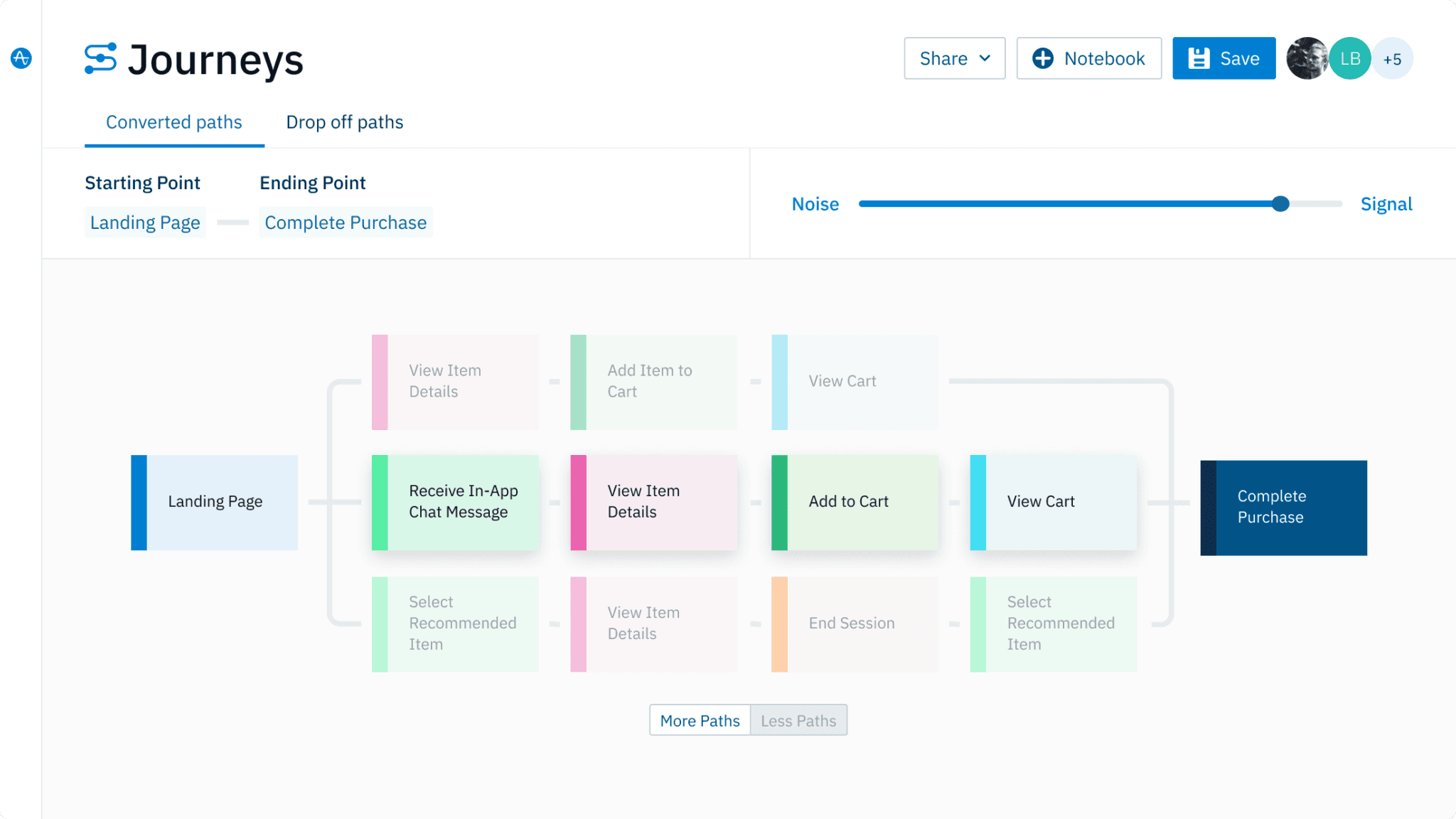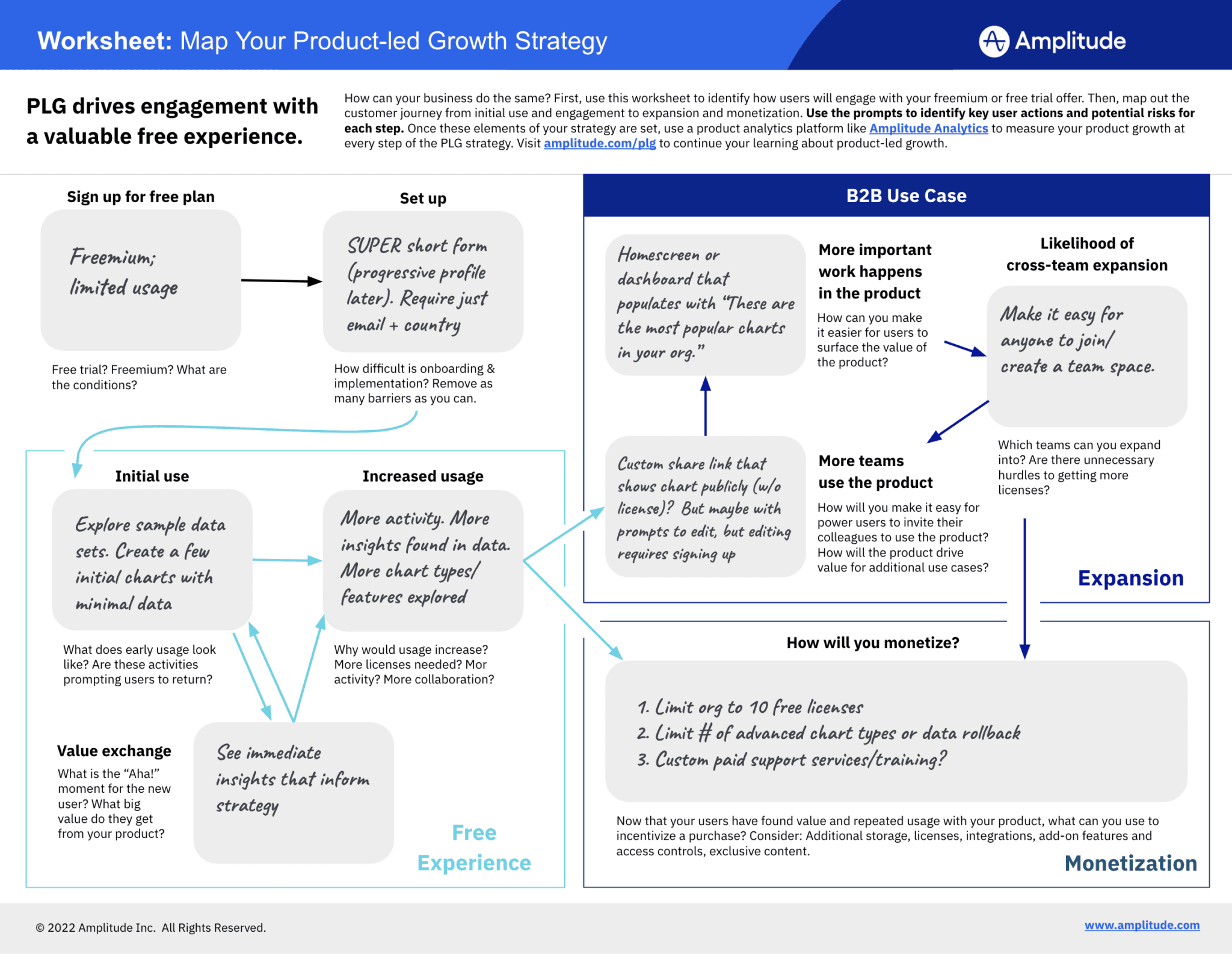How to Create a Product Differentiation Strategy That Works (Examples & Tools)
Stand out in a crowded marketplace by leveraging your unique selling proposition.
Originally Published on April 14, 2023
Browse by category
- What is a product differentiation strategy?
- Seven types of product differentiation strategy
- Benefits of implementing a product differentiation strategy
- How to find product differentiators
- Product differentiation strategy examples
- Product differentiation strategy tools
- Use product differentiation as one piece of a complete product strategy
A product differentiation strategy helps your business stand out from the competition.
If you’re the only pizza shop in town, your pies don’t have to be Michelin-level to attract customers. So what if the crust is a little stale? If locals want a slice, they’ll head to your place.
The calculus changes when half a dozen other pizzerias hang a shingle on your block. If your pizza doesn’t stand out, you won’t be in business much longer.
Key Takeaways
- A product differentiation strategy identifies your unique selling proposition (USP) and uses that as a wedge to pry customers away from your competitors.
- Product differentiation can be measurable—like price or calorie count—or subjective. Often, a customer uses a blend of both measurable and subjective factors to decide on a purchase.
- There are many product differentiation strategies available to small businesses, and most companies will use a combination of several depending on the strengths of their product and the weaknesses of their competitors’ products.
- Successful product differentiation results from market research into your target audience and competitors.
What is a product differentiation strategy?
A product differentiation strategy identifies what makes your product uniquely superior to the competition and then systematically emphasizes that difference to potential customers.
The strategy guides everyone’s work. If you’re a pizza place, that’s everyone from the cheesemaker who whips up your mozz to the pizzaiolo who makes the pies and the server who delivers them to the tables.
Businesses with multiple products also use product differentiation to target products to different audience segments. That way, two similar products don’t compete for the same customers. For example, a pizza shop might have options for both meat eaters and vegetarians.
There are two types of product differentiation, vertical and horizontal. Potential customers will often use a blend of both categories to purchase.
Vertical product differentiation
Vertical product differentiation is a measurable difference. If a customer buys a slice from your shop because it’s cheaper than the pizza place down the street, they make a vertical product differentiation.
Another example is if a customer chooses to eat at your competitor’s restaurant because their arrabbiata sauce is spicier.
Horizontal product differentiation
Horizontal product differentiation includes factors that come down to a matter of personal preference. There’s no difference in cost or calories between the Pepsi and the Coke your customer chooses to order with their pizza. It’s subjective.
Seven types of product differentiation strategy
Just as customers consider many factors in their purchases, businesses are served well by blending multiple product differentiation strategies. Which strategies suit your business will depend on your product’s strengths, the weaknesses of your competitors, and the values and preferences of your customers.
Price
Price is both the most straightforward and the most perilous strategy. If you want to beat your competitors at lower prices, you’ll have to find ways to be more efficient in building, maintaining, and distributing your product.
You can succeed with a pricing strategy by using cheaper materials or paying workers lower salaries. Other options are to cut out features or offer less customer service to achieve a competitively low price.
Competing on lower prices opens your product to the constant threat that another business will find a way to be more efficient than you and undercut your price point. If they undercut you, you’ll have to lower costs even more. While you’ll tend to attract customers willing to sacrifice quality for cost, there’s a limit to how substandard your product can be before they decide it’s not worth it and stop buying.
Quality
When you give customers a quality product, they’re willing to pay a higher price. Quality can mean different things for different products. Outdoor gear companies competing on better quality might focus on durability if they cater to mountaineers. They’ll make their gear out of rugged, tough materials that won’t tear. Quality will mean high-end, breathable, lightweight fabrics if they target ultrarunners.
Service
Successful product differentiation can be about the experience of interacting with your company as much as the product itself. Businesses that compete on service strive to impress customers every time customers interact with them.
Businesses can outshine the competition with their service in other ways. They can have a courteous, knowledgeable human available to answer questions and concerns instead of an impersonal, automated customer support system. Or, they can make it easy to return a product that is different from what a customer wanted without the hassle of printing a return label and the expense of purchasing postage.
Branding
The people you use in your commercials, the language you use in your ad copy, and the colors and design of your product should all dovetail with your customers’ values and personalities. Matching your branding to your audience’s values achieves product differentiation through brand loyalty.
Branding is a powerful differentiator because when customers develop brand loyalty, they will purchase as much because of what it says about them as it says about your product.
Functionality
The latest unique features can give your product an edge over the competition. But it also means you need to be willing to pay high salaries for talent and provide those employees with a deep research and development budget to stay ahead of the curve. Look no further than the ever-escalating contest of higher-resolution lenses and bigger memory banks in Samsung and Apple smartphones to see how fast you’ll need to innovate in competitive industries.
On top of the high costs of innovation, businesses seeking successful product differentiation through functionality always run the risk of their latest feature being a dud. After all, how many 3D televisions do you see on the shelves at Best Buy anymore?
Ease of Use
Sometimes businesses can differentiate their product by zigging where others in the industry zag. Adobe Photoshop is loaded with features, but it’s overwhelming for someone who simply wants to add a little saturation to their selfies.
Your business can stand out by offering sleek, easy-to-use product designs and enough functions to do everything your customers want but no more.
Audience
It’s tempting to gear your products for the broadest possible audience to maximize the number of people who want to buy from your business. However, it can make more sense as a successful product differentiation strategy to target a niche audience that your competitors are overlooking.
You’ll need deep research to identify this target market and what they need from your product that they aren’t getting from your competitors’ products. But if you can figure out the right audience and messaging, it can pay off in customer loyalty.
Benefits of implementing a product differentiation strategy
Businesses with a product differentiation strategy have the edge over their competitors in attracting and retaining customers.
A product differentiation strategy adds value to your business by helping your products stand out in the sea of options available to today’s customers. People who appreciate differences are willing to pay more.
While the price point is one product differentiation strategy, the ability to build a loyal following based on other factors means your business can be competitive in your industry, even in the face of larger, better-funded competition.
How to find product differentiators
It’s not enough to guess what your product differentiation strategy should be. Learning more about your customers and your competition would be best, so you don’t waste time and money improving things customers don’t care about.
Look for people using similar products from your competitors on review sites. Consider what kinds of things reviewers praise and loathe about the product and how they use it.
For example, you might find Yelp reviews praising the price point of the pizza joint down the street but complaining about the lack of vegetarian options or grumbling about the slow delivery times. These comments reveal a market segment that is too busy to dine in at the restaurant but still wants a quality meal that meets their dietary requirements.
Your product differentiation strategy might be based on better service and targeting a niche audience.
You can investigate this discovery by looking at how people interact with your website and app. Say people frequently navigate to your delivery page or click on the veggie lovers’ option on your digital menu. You’ll have further proof that there is an untapped opportunity.
Product differentiation strategy examples
Product differentiation matters for massive enterprises and garage-based small businesses alike. For the most prominent companies, it can be about maintaining their edge. However, small companies have shown they can steal market share from bigger companies with the proper product differentiation.
Chick-fil-A
Competitive landscape
Quick-service restaurants are a $322 billion industry where low prices, high convenience, and consistent food are merely table stakes. Chick-fil-A is the third largest brand in the space because it does all three things well while ensuring the customer feels special.
Product differentiation strategy
Chick-fil-A excels at customer service. They’ve topped the American Consumer Satisfaction Index’s list for eight years. The chain managed this feat through small things, like requiring staff to say “my pleasure,” a unique phrase compared to the standard “you’re welcome.” However, that attention to detail starts at the top. The corporation allows franchise owners only one store, and each owner goes through extensive training.
Apple
Competitive landscape
Apple is a tech leader famous for reimagining entire categories of products like the cellphone and the portable music player. However, as competitors follow in their footsteps or leapfrog them in some ways, Apple remains best-of-breed to their brand-loyal fans.
Product differentiation strategy
Apple has consistently carved out space as a hip brand for creative professionals through its branding differentiation strategy. The company has emphasized sleek, minimalist designs that spark joy in their customers before they’ve even held the latest iPhone or MacBook.
Hyperlite Mountain Gear
Competitive landscape
Companies like North Face, Mountain Hardwear, and Patagonia dominate the $7.1 billion outdoor gear industry. These companies aim for broad appeal across every kind of outdoor enthusiast.
Product differentiation strategy
By trying to be something to everybody, many of the outdoor gear industry’s biggest players hedge their bets with materials and costs to avoid scaring away casual outdoor enthusiasts in their audience. That hesitancy opens the door for brands like Hyperlite Mountain Gear to steal market share at the upper end of the market, where performance surpasses every other consideration, including price. It’s a small niche, but Hyperlite has courted these users with its innovative designs, fancy fabrics, and word-of-mouth marketing strategy.
Product differentiation strategy tools
Amplitude offers a range of market research and tools that can help you build your product differentiation strategy more efficiently.
Amplitude
Retention analysis
Spending all your money acquiring users only to lose them after one sales cycle means you will never experience true long-term growth. Retention is critical for every product, whether you’re at a Fortune 500 company or a five-person startup. Learn proven methods for building a data-informed retention strategy using Amplitude’s Retention Analysis chart and the Retention as Your Growth Engine series.
Pathfinder
Amplitude Pathfinder helps you see what captures visitors’ attention to your website and app. With better data about what your target market is looking for, you can guide product development to meet those needs.
Journeys
The complexity of modern digital experiences can make it difficult for teams managing those experiences to get a comprehensive view of what users are actually doing in the product. Amplitude Journeys helps you overcome this challenge and develop a true understanding of how your users convert—or fail to convert—between key transitions.
Product Strategy Template
Amplitude’s product strategy template is a roadmap for identifying the intersection of your target market’s needs, your product’s strengths, and your competition’s weaknesses.
Experiment
To enable rapid innovation and deployment, companies must develop a product strategy that involves effective A/B testing and experimentation. If the turnaround time from “hypothesis to change” is too long, organizations risk losing both customers and revenue. Tools like Amplitude Experiment can help you scale product-led experimentation across your organization.
Other product differentiation tools
On top of a digital analytics platform like Amplitude, the following tools can help you differentiate your product:
Use product differentiation as one piece of a complete product strategy
A product differentiation strategy is important for winning customers in a competitive market. However, it’s only one part of your overall product strategy.
You can read more about building a comprehensive product strategy with our Product Strategy Playbook: A Guide to Flywheels. Start learning how to delight your customers and plan for growth.

Darshil Gandhi
Director, Product Marketing, Amplitude
Darshil Gandhi is a Director of Product Marketing at Amplitude. He leads global technical and partner product marketing, collaborates with product and go-to-market teams on strategy, positioning, messaging, campaigns, and enablement. He was previously a solutions consulting team principal at Amplitude, and has helped dozens of Amplitude customers turn their data into actionable insights. Darshil graduated from Dartmouth College with a Masters in Engineering Management.
More from Darshil









